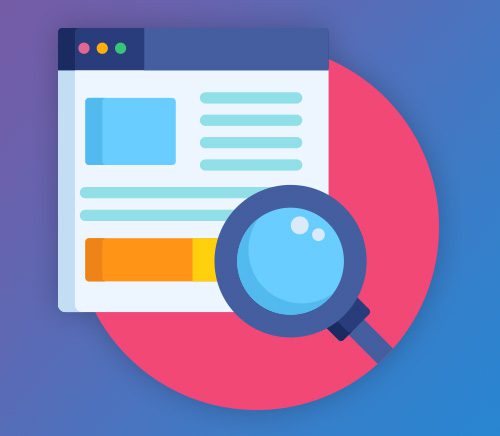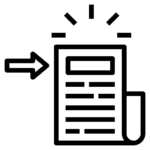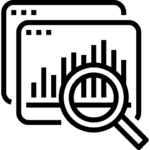Let’s learn how to optimize your blog for SEO? It’s important because, as a blogger, you definitely wish your articles to be seen by large number of audiences. SEO is crucial because it makes your blog more visible and increases traffic through organic search results.

Optimizing your posts, whether they are for a blog, social media, or any other platform, can help you reach a wider audience and achieve your content goals. Here are some important key-points to help you optimize your posts effectively:
- Know Your Audience: Understand your target audience’s interests, preferences, and area of concern.
 By understanding the demographics, interests, and preferences of your target audience helps you create content that resonates with them. Tailor your content to address the audience requirements and engage them effectively and remember, your audience may evolve over time. Stay attuned to changes in trends, preferences, and demographics, and be willing to adapt your content strategy accordingly. This is how you foster strong, long-term relationships between your audience and business as well.
By understanding the demographics, interests, and preferences of your target audience helps you create content that resonates with them. Tailor your content to address the audience requirements and engage them effectively and remember, your audience may evolve over time. Stay attuned to changes in trends, preferences, and demographics, and be willing to adapt your content strategy accordingly. This is how you foster strong, long-term relationships between your audience and business as well. - Keyword Research: Keyword research is an important aspect for search engine optimization (SEO) that involves identifying and analyzing the terms and phrases your targeted audience generally use when searching for similar related information online. You can brainstorm seed keywords as well as identify long tail keywords which are more specific and have lower search volume but can be highly targeted.
You can also explore the keyword research tool such as Google keyword planner, SEMrush etc. and using these tools, you can further explore search volume, competition, and other relevant metrics for each keyword. Once all set and done, you can use these keywords strategically & organically in your content to improve search engine visibility. - Compelling Headlines: A compelling headline not only engage readers but also improves your content’s searchability, leading to
 increased visibility and organic traffic. A well-crafted headline can significantly increase click-through rates. Further, strong headline encapsulates the essence of your content, providing a concise summary that immediately communicates the main point or benefit to the reader. Choose attention-grabbing headlines that are both informative and interesting. Use appropriate H1, H2, H3 etc. headings in your content to have visual impact.
increased visibility and organic traffic. A well-crafted headline can significantly increase click-through rates. Further, strong headline encapsulates the essence of your content, providing a concise summary that immediately communicates the main point or benefit to the reader. Choose attention-grabbing headlines that are both informative and interesting. Use appropriate H1, H2, H3 etc. headings in your content to have visual impact. - High-Quality Content: Creating high-quality content is essential for the success of a blog. High-quality content not only attracts and engages your audience but also improves your blog’s visibility on search engines. Ensure your content is well-researched, informative, and to the point. A good-quality content is more likely to be shared and liked by others. To have a good high-quality content, you must focus on the relevancy of the content, originality of the content, clarity on the topic, intuitive or engaging writing skills along with sufficient visual appeal to your blog.
- Visual Content: A graphic illustration conveys a stronger message than words, that is why it is popularly said that
 “A picture is worth a thousand words” meaning that sometimes multiple ideas/complex things can be conveyed by a single still image, that conveys its meaning or essence more effectively than a mere verbal description. Ultimately user experience matters and to achieve that Use high-quality visuals that enhance the reader’s experience. Incorporate images, videos, infographics, and other visual elements to make your posts more engaging and intuitive.
“A picture is worth a thousand words” meaning that sometimes multiple ideas/complex things can be conveyed by a single still image, that conveys its meaning or essence more effectively than a mere verbal description. Ultimately user experience matters and to achieve that Use high-quality visuals that enhance the reader’s experience. Incorporate images, videos, infographics, and other visual elements to make your posts more engaging and intuitive. - Mobile Optimization: Ensure that your content is mobile-friendly as well because a significant portion of online user’s access content on mobile devices. Test your posts on various screen sizes and browsers. To have a positive user experience and improve your blog’s performance on mobile, you must consider all these mobile optimization practices such as mobile friendly themes, responsive design, optimize images for mobiles, limited pop ups on screen etc.
- Check your Meta Tags : While there are several types of meta tags, the two most important for SEO are the meta title and meta description. The meta title is one of the most important parameters for on-page SEO. It is displayed as the clickable headline in search engine results and is a major factor in determining a page’s relevance to a user’s search query.
Optimize your content for search engines by using meta titles, meta descriptions, alt tags for images, and headers appropriately. Ensure your website is developed, hosted, and configured properly in terms of fast loading, mobile-responsive, security, conversion. Well-prepared meta titles and descriptions contribute positively to a memorable user experience and can lead to improved SEO performance. - Internal and External Links: Internal links are hyperlinks on one page of your website that direct the reader to another target page
 on your website, whereas an external link is a hyperlink that directs the reader to an external page on a different website. Internal links are used by Google and other search engines to better understand the structure of a website. These links help the readers and the search engines to know which pages are most important. To have a better user engagement and navigation, include relevant internal links to other pages on your blogs. You can also incorporate external links from reputable sources to back up your claims and improve your content’s authority.
on your website, whereas an external link is a hyperlink that directs the reader to an external page on a different website. Internal links are used by Google and other search engines to better understand the structure of a website. These links help the readers and the search engines to know which pages are most important. To have a better user engagement and navigation, include relevant internal links to other pages on your blogs. You can also incorporate external links from reputable sources to back up your claims and improve your content’s authority. - Have Backlinks Blog reference with related content: Backlinks are links from your own previous blogs and other online sources that you think are the best fit as per your current content of Blog. They are essential for increasing your blog’s visibility and improving its search engine rankings. Next to content and keywords, backlinks are the third most important factor for search optimization. The more backlinks your blog post has, the more organic traffic it gets from Google. You can perform a link gap analysis to identify sites that link to your competitors but not to you (SEMRush is very useful for link gap analysis).
- Social Sharing: Social sharing buttons can help to generate more traffic to your website by making it easy for users to share your content with their friends and followers on social media platforms. This can help to expand your reach and attract new users to your website. Make it easy for readers to share your content on social media by including social sharing buttons. Encourage your audience to share your posts.
- Consistency: Consistency in posting schedule, producing high-quality content, and establishing a connection with your readers by your writing skills and style, bloggers can build trust and credibility, which helps in improving their SEO rankings, and enhance their audience base. Maintain a consistent posting schedule to keep your audience engaged and pre-defined a routine for the posting of blogs. When you’re consistent in your approach, you’re building a trust with your audience that you’re serious about your blogs. You’re committed to delivering quality content, and only a professional blogger takes its craft seriously.
- Monitor Analytics: With the right analytics information, you can get to know about your readers like demography where they
 coming from and what specific portion of content is being checked. You can use tools like Google Analytics to track the performance of your posts and further analyze the data on page views, bounce rates, time spent on page, and conversion rates to identify the area of focus for better outcome. Overall, analytics lets you understand with valuable insights that can help you improve your blog’s contents and its performance, attract more readers, and achieve your blogging goals.
coming from and what specific portion of content is being checked. You can use tools like Google Analytics to track the performance of your posts and further analyze the data on page views, bounce rates, time spent on page, and conversion rates to identify the area of focus for better outcome. Overall, analytics lets you understand with valuable insights that can help you improve your blog’s contents and its performance, attract more readers, and achieve your blogging goals. - Learn from Analytics: Regularly review your analytics to identify trends and adjust your content strategy accordingly. What worked in the past may not always be effective in the future.
- Call to Action (CTA): The successful blogs do have CTAs at multiple places. They appear at the starting, middle, and end of the content. The whole point of your blog is not to publish the information, but rather to engage readers with your content, product, or services. To achieve that, you need calls to action. CTAs create a sense of informed guidance about what to do next or what can be done further. Include clear and compelling CTAs to guide your readers on what action to take next, whether it’s subscribing, sharing, or making a purchase etc.
- A/B Testing: A/B testing is used to measure the performance of different versions of the similar type of blog content. This helps to identify which version will give the best result. They help you understand your potential readers or audience: When you see what types of emails, headlines, and other features your audience responds to, you gain insight into who your audience is and what kind of content, services they require. Experiment with different post formats, headlines, images, and CTAs to determine what suits better with your audience. A/B testing can help you refine your content strategy.
- Engage with Comments and Feedback: Engaging with readers through comments and feedback is essential for creating a vibrant
 blog community. There are plenty of benefits to enabling comments on your blog, including an opportunity to engage with your readers, grow a stronger community. Respond to comments and feedback from your audience. Engaging with your readers builds a sense of community and can lead to more shares and return visits.
blog community. There are plenty of benefits to enabling comments on your blog, including an opportunity to engage with your readers, grow a stronger community. Respond to comments and feedback from your audience. Engaging with your readers builds a sense of community and can lead to more shares and return visits. - Share on Multiple Platforms: By sharing your content on multiple platforms, it increases the chances that general readers and their contacts will see it and quite good chances that they might get engage with it. There is another term called ‘Cross-posting’ which is when you share the same content onto multiple platforms. While cross posting offers many benefits, there can be few drawbacks as well. Suppose, if some readers follow you on multiple platforms and see the same content, they may get bored and loose attention to what you post. All in all, it is not a good idea to post the same content across multiple platforms at the same time. Instead, you may consider sequencing the timing of your posts so that it does not hit all at once. This will help you avoid overwhelming your audience and prevent your posts from looking spammy.
- Email Marketing: Email gives you a chance to proactively reach out to your potential readers and clients to promote your content and skills. Email marketing not only helps you keeps your readers up to date, but also encourages return visits and gives you the chances to increase the traffic on your blogs content. You should consider email marketing to promote your posts to your email subscribers. A well-targeted email campaign can drive traffic to your content.
Wrapping Up
Remember that optimizing your posts is an ongoing process, and what works best may vary depending on your niche, audience, and goals. Stay updated with the latest trends and adapt your strategy accordingly to continually improve your content’s performance.
Being a successful Blogger, you must follow the blog SEO tips as outlined in this article, to improve your article for better ranking. Ultimately, the content and its quality rules the right audience on a faster website.
For more information, you may reach out to us at info@wordpromise.com
 By understanding the demographics, interests, and preferences of your target audience helps you create content that resonates with them. Tailor your content to address the audience requirements and engage them effectively and remember, your audience may evolve over time. Stay attuned to changes in trends, preferences, and demographics, and be willing to adapt your content strategy accordingly. This is how you foster strong, long-term relationships between your audience and business as well.
By understanding the demographics, interests, and preferences of your target audience helps you create content that resonates with them. Tailor your content to address the audience requirements and engage them effectively and remember, your audience may evolve over time. Stay attuned to changes in trends, preferences, and demographics, and be willing to adapt your content strategy accordingly. This is how you foster strong, long-term relationships between your audience and business as well. increased visibility and organic traffic. A well-crafted headline can significantly increase click-through rates. Further, strong headline encapsulates the essence of your content, providing a concise summary that immediately communicates the main point or benefit to the reader. Choose attention-grabbing headlines that are both informative and interesting. Use appropriate H1, H2, H3 etc. headings in your content to have visual impact.
increased visibility and organic traffic. A well-crafted headline can significantly increase click-through rates. Further, strong headline encapsulates the essence of your content, providing a concise summary that immediately communicates the main point or benefit to the reader. Choose attention-grabbing headlines that are both informative and interesting. Use appropriate H1, H2, H3 etc. headings in your content to have visual impact. “A picture is worth a thousand words” meaning that sometimes multiple ideas/complex things can be conveyed by a single still image, that conveys its meaning or essence more effectively than a mere verbal description. Ultimately user experience matters and to achieve that Use high-quality visuals that enhance the reader’s experience. Incorporate images, videos, infographics, and other visual elements to make your posts more engaging and intuitive.
“A picture is worth a thousand words” meaning that sometimes multiple ideas/complex things can be conveyed by a single still image, that conveys its meaning or essence more effectively than a mere verbal description. Ultimately user experience matters and to achieve that Use high-quality visuals that enhance the reader’s experience. Incorporate images, videos, infographics, and other visual elements to make your posts more engaging and intuitive. on your website, whereas an external link is a hyperlink that directs the reader to an external page on a different website. Internal links are used by Google and other search engines to better understand the structure of a website. These links help the readers and the search engines to know which pages are most important. To have a better user engagement and navigation, include relevant internal links to other pages on your blogs. You can also incorporate external links from reputable sources to back up your claims and improve your content’s authority.
on your website, whereas an external link is a hyperlink that directs the reader to an external page on a different website. Internal links are used by Google and other search engines to better understand the structure of a website. These links help the readers and the search engines to know which pages are most important. To have a better user engagement and navigation, include relevant internal links to other pages on your blogs. You can also incorporate external links from reputable sources to back up your claims and improve your content’s authority. coming from and what specific portion of content is being checked. You can use tools like Google Analytics to track the performance of your posts and further analyze the data on page views, bounce rates, time spent on page, and conversion rates to identify the area of focus for better outcome. Overall, analytics lets you understand with valuable insights that can help you improve your blog’s contents and its performance, attract more readers, and achieve your blogging goals.
coming from and what specific portion of content is being checked. You can use tools like Google Analytics to track the performance of your posts and further analyze the data on page views, bounce rates, time spent on page, and conversion rates to identify the area of focus for better outcome. Overall, analytics lets you understand with valuable insights that can help you improve your blog’s contents and its performance, attract more readers, and achieve your blogging goals. blog community. There are plenty of benefits to enabling comments on your blog, including an opportunity to engage with your readers, grow a stronger community. Respond to comments and feedback from your audience. Engaging with your readers builds a sense of community and can lead to more shares and return visits.
blog community. There are plenty of benefits to enabling comments on your blog, including an opportunity to engage with your readers, grow a stronger community. Respond to comments and feedback from your audience. Engaging with your readers builds a sense of community and can lead to more shares and return visits.